AI at Work
AI Image Generation for Food & Beverage Brands: How to Ace Food Photography with AI

Neelam Goswami · Content Marketing Associate
April 4th, 2025 · 11 min read

In the food and beverage industry, compelling visuals directly influence consumer decisions and drive sales. Think of the perfect McDonald's burger you see in commercials or the inviting water droplets on a chilled Coca Cola bottle — these carefully crafted images aren't just attractive; they're strategic marketing assets that convert viewers into customers. Because as they say, you eat with your eyes first. Until recently, commercial photography meant studios, expensive equipment, specialized photographers, and food stylists. This traditional approach to professional food photography was both costly and time-consuming for brands of all sizes.
However, AI image generation tools have democratized the art of food photography, allowing brands to produce stunning, consistent, and customizable imagery at a fraction of the traditional cost and time. For established food and beverage brands, AI food photography offers a perfect balance, streamlining production processes while ensuring images remain true to brand guidelines and visual standards. Forbes reveals food & beverage brands that don't adopt AI soon are likely to fall behind with industry giants like Mondelez International and Coca Cola already tapping into AI to create personalized images, text and videos.
Making AI food photography work for your brand

What is AI food photography?
AI food photography is the use of artificial intelligence technologies to create, enhance, or modify images of food products without traditional photography. AI image generation tools leverage machine learning algorithms to generate photorealistic images of food products based on text descriptions, reference images, or product specifications. These systems can create visuals that appear professionally photographed without the need for physical products, studio setups, or specialized photography teams.
A personalized Marketing AI Platform like Typeface can be a powerful assistant for food and beverage (F&B) industry enterprises, enabling them to create, deliver, and optimize on-brand content throughout the customer journey while significantly speeding up and simplifying the product photography process. With our brand-personalized AI, many global food and beverage brands have crafted successful digital marketing campaigns across various markets. From creating on-brand product shots for their websites and online storefronts to customizing visuals for different geographies, these brands have reduced image production time by 50 to 90% while significantly cutting costs.
Making AI food photography work for your brand
AI image generation offers powerful advantages for food and beverage marketing, but many teams struggle to maintain brand consistency or achieve truly professional results. These simple approaches will help your marketing department maximize AI's potential:
1. Start with clear brand guidelines for AI image generation
Before generating images, it is important to document exactly what makes your food photography distinctive. Your brand may have its unique image styles, color palettes, logos and fonts that must be incorporated in all visual content you create. Having clear brand guidelines not only guides your creative team but also helps train AI tools on your quality and branding standards.
On Typeface, for instance, you can save Brand Kits that include your image styles, color palettes, email layouts, logos, fonts, and even text style guides and brand voices. Applying the brand kit to AI generations ensures that the output closely aligns with your brand's requirements.
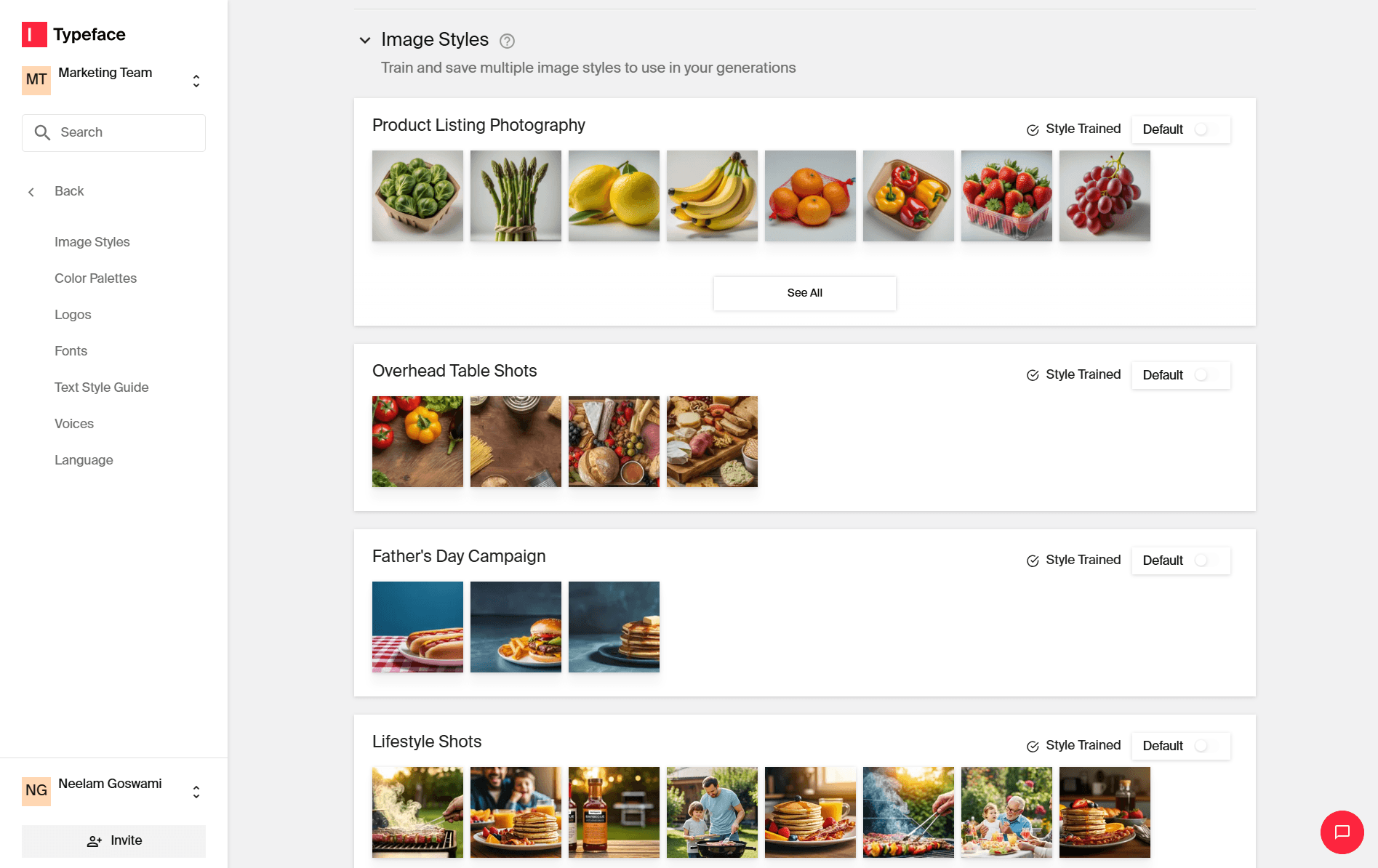
It is a good idea to train the AI with different image styles and your brand's visual identity. This could include images with signature lighting styles (bright and clean vs. warm and moody), typical camera angles and composition rules, standard background surfaces and environments, and so on.
2. Create effective AI image generation prompt templates
With most AI image generation tools, the output largely depends on the type of prompts you provide. It is advisable to develop some standardized AI image prompt templates that will give you consistent, on-brand results. The prompt template should ideally include:
Technical specifications (photorealistic, studio lighting, 4K, camera/lens type)
Brand-specific descriptors (vibrant, rustic, elegant)
Exact composition requirements
References to professional photography techniques, where possible
However, with Typeface, a lot of this is already taken care of so you don't need any prompt engineering to achieve your desired outputs. The AI Visual Inspiration Studio on our platform lets you choose from a vast searchable library of inspiration images for various product categories, image styles and settings. You can customize an inspiration image with your product assets to get the output you want, no manual prompting needed. The platform also allows you to upload your own inspiration images for deeper customization.
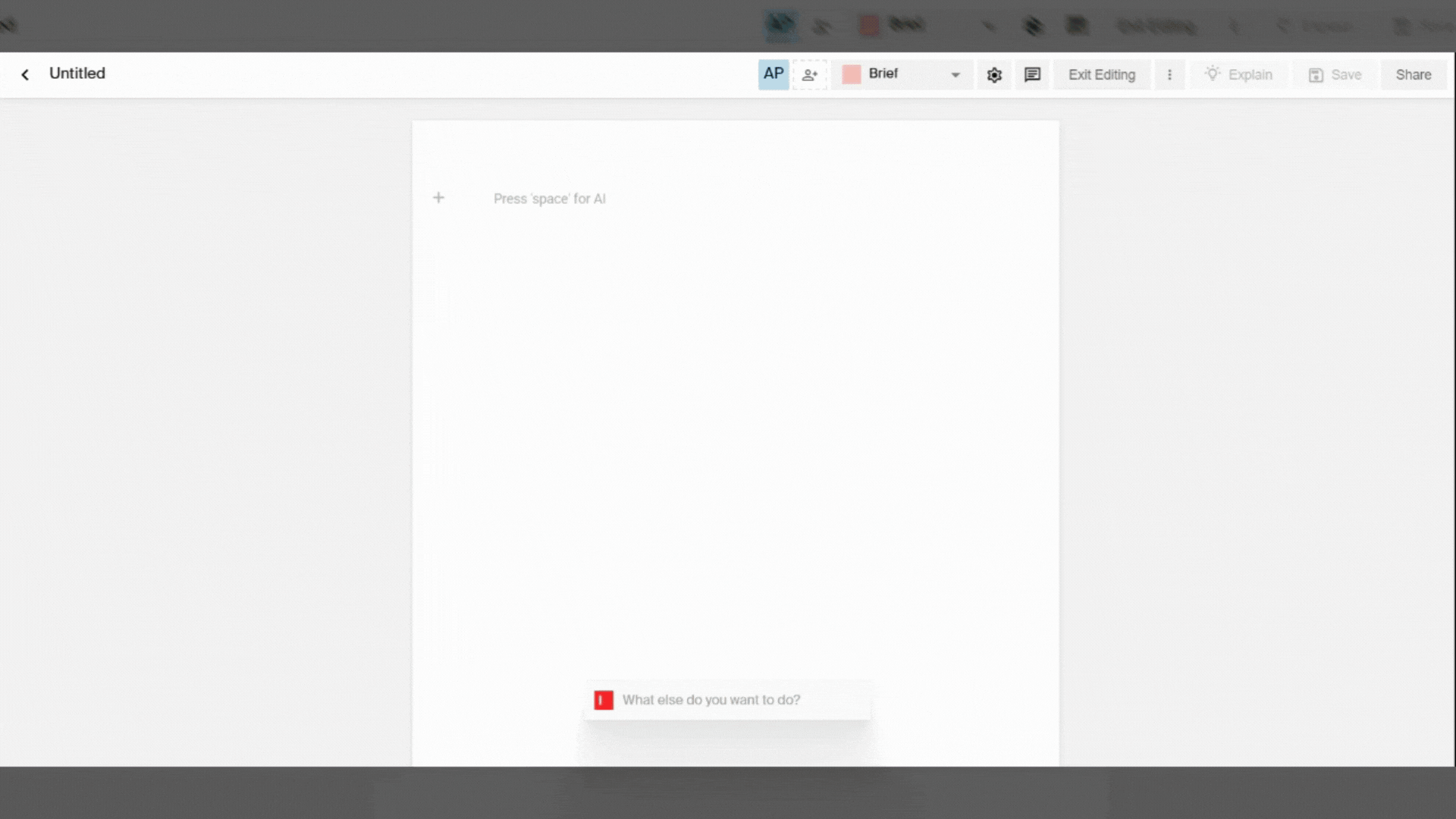
To stage your own food product shots, you can leverage Image Studio, add your product asset and your prompt to generate the image. Here too, you get the assistance of the Magic Prompt feature that helps improve your AI image generation prompts by adding the right modifiers and technical details to produce better quality outputs.
3. Generate images that appeal to your target customer
In food and beverage marketing, audience segmentation usually drives visual strategy. Brands like Fanta, Oreo, and Mars craft imagery specifically designed to resonate with younger demographics, particularly children and teens. Meanwhile, brands such as Hershey's, Toblerone, and Mountain Dew develop visual assets tailored to adult consumer preferences and purchasing behaviors.
AI image generation technology has made this customization much easier, allowing marketing teams to efficiently create audience-specific product photography without separate photoshoots for each demographic. With AI, you can rapidly test and deploy different visual approaches based on audience data, producing age-appropriate styling, contexts, and compositional elements that speak directly to intended consumer segments while maintaining brand consistency across all visual assets.
Let's take the example of a beverage brand that wants to target two different audience segments - one segment prefers to spend their day out on the beach relaxing and admiring the sunset, while another prefers adventure and activities like surfing and water sports. With Typeface, we generated product shots for both.
Prompt: An up-close photo of a can of beer sitting on a surface of beach pebbles, low angle view, in the background is the ocean, sunset sky, bright and natural lighting, Nikon, vivid colors, commercial photography.
Magic Prompt takes over to improve this prompt and here's what the resulting image looks like.
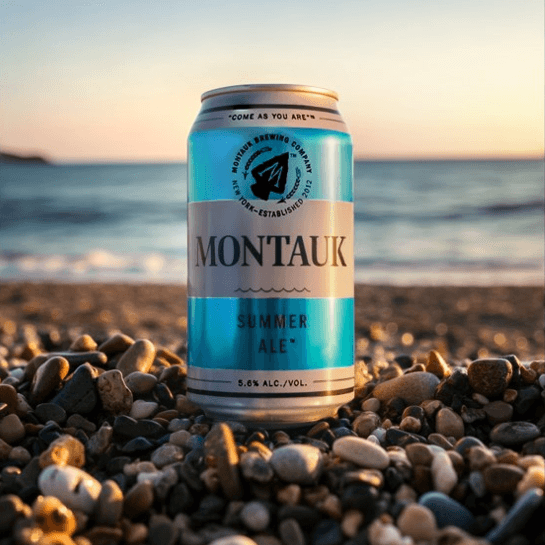
Whereas, for the adventurous kind, this is the prompt we provided and the image we got.
Prompt: An up-close photo of a can of beer sitting on a surfboard on the sand, low angle view, in the background is the ocean and blue skies, Montauk, bright and natural lighting, Nikon, vivid colors, commercial photography.
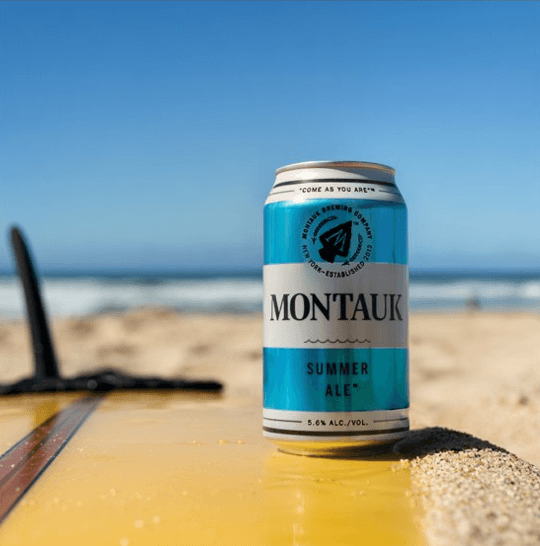
4. Ensure product assets blend with scene
Often with AI image generation, what could put audiences off is that the images do not look authentic. Working with most AI image generation tools or even image editing tools, you may have noticed that your product looks out of place, as if it has been simply pasted onto the background and does not blend with the environment. Such quality of visuals could be damaging to your brand's reputation. In a recent study, consumers were seen to actually prefer AI generated food images over real images, but that is until they can tell the difference. When the consumers could tell that an image was generated by AI, it seemed to lose its appeal.
That is why it is extremely important that your AI food photography is realistic and cohesive. This is where Typeface stands apart from other AI image generation tools. Firstly, using our product preservation technology you can train the AI with your product assets to ensure that all the details of your product are represented correctly in the AI-generated images.
Then, with our Image Harmonization technology, you can harmonize your image to adjust the lighting, reflections, transparency, shadows and other parameters so that the product asset blends perfectly with the scene and look like they were photographed in a studio or on location.

5. Create market-specific food images using AI
When expanding into global markets, food and beverage brands must ensure their imagery resonates with local preferences and dining traditions. AI image generation has simplified this process by enabling marketing teams to quickly create culturally authentic food photography.
A major global beverage brand, for instance, used Typeface to generate images of their product paired with local cuisines of their target markets showing how the beverage complements any meal. With Typeface, you can easily customize the scene for your product photography by adding geo-culturally significant elements.
Here's an example of an ad creative of a beer brand for the UK market, generated using Typeface.

Typeface also lets you adapt your pre-approved designs and imagery for different markets or audience segments with Ad Agent. Using this AI agent, you can easily create multiple variations of an existing design for different target markets, customers, and channels, without any manual rework and resizing involved. You can import already approved assets including images, text, and translations to the platform. This not only speeds up approval workflows but also ensures that your content is consistent across the board.
6. Use AI to enhance image quality
AI tools can take image enhancement to a whole new level. Instead of spending hours editing your images for lighting, color balance, and other aspects to ensure the food pops off the page, you could bring the editing time down to a few minutes with AI. While using the right prompts will already give you a quality output, Typeface also lets you further enhance your AI-generated images on Image Studio itself. It offers quick AI image editing tools that allow you to auto-crop your images to your preferred size, auto-adjust lighting, colors, and shadows, and even select an area of the image to edit with a simple text prompt.
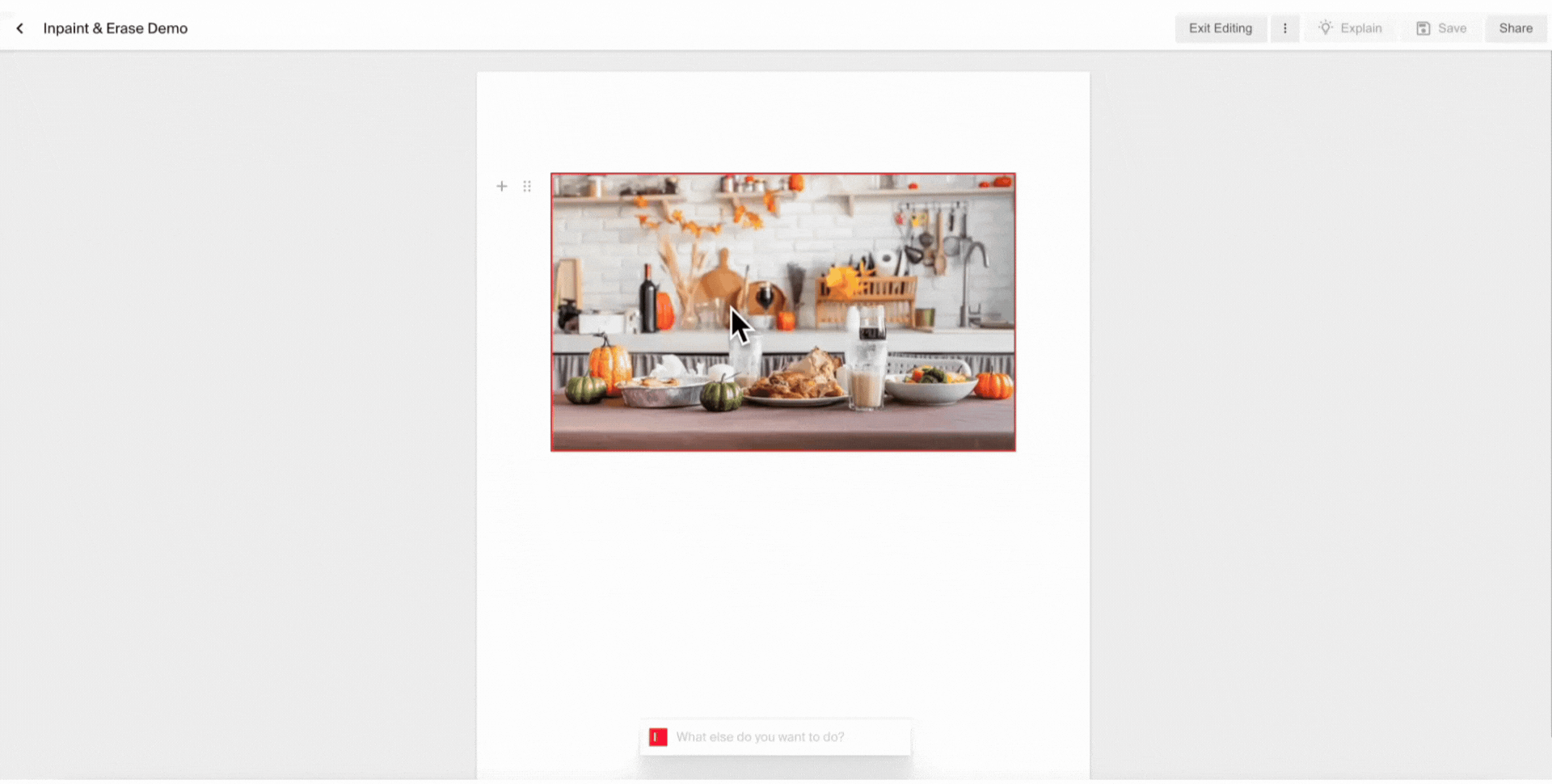
You can "outpaint" or extend images beyond their borders to resize the image to a different aspect ratio, without affecting its integrity. "Inpainting" AI images allows you to add elements while "Erase" takes elements out of your images too.
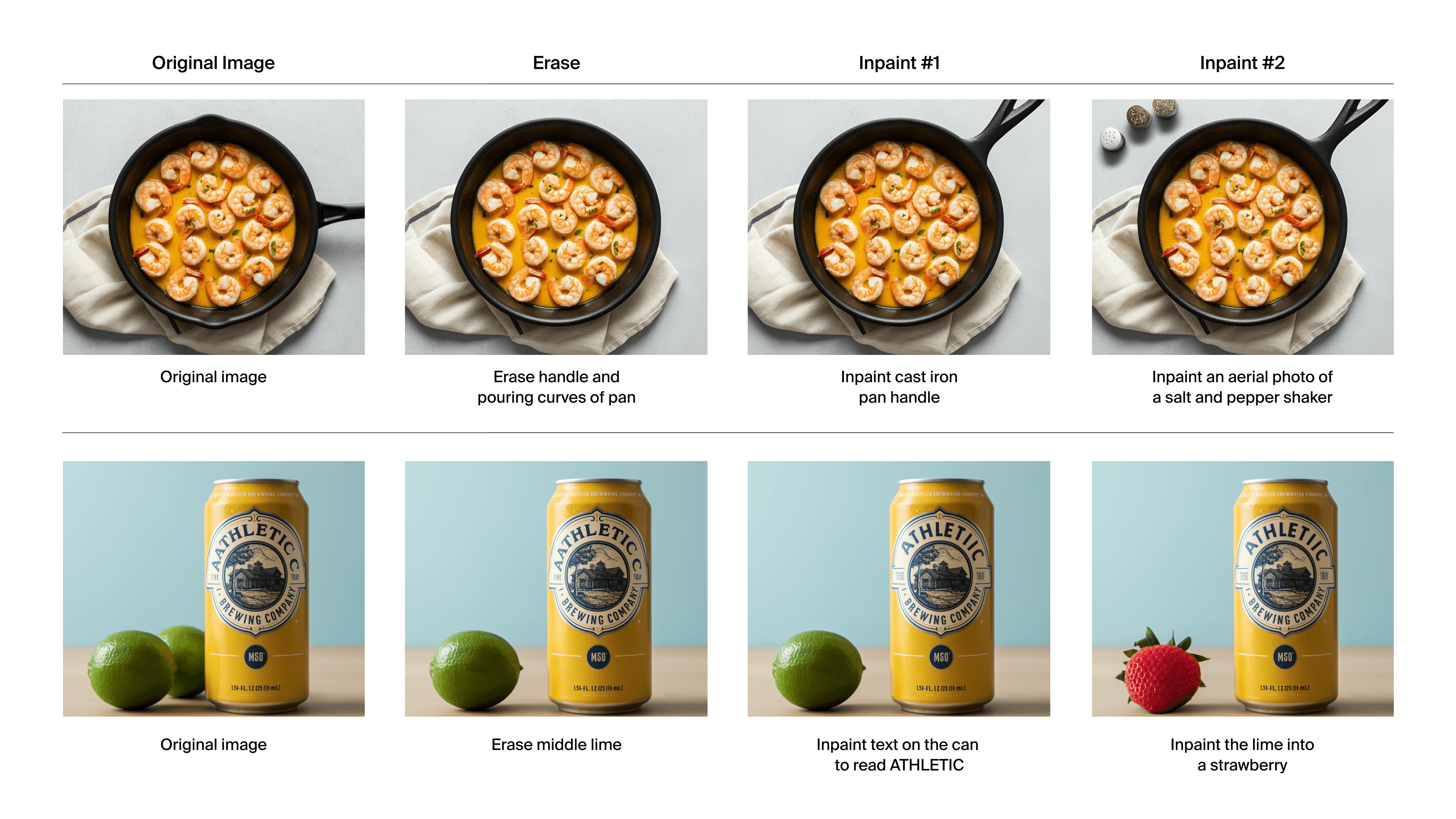
Apart from this, Typeface Image Studio lets you add filters, effects, decorations and text overlays to your images too. We have created a detailed guide on how to edit your AI-generated photos on Typeface that you might find interesting.
Future of AI image generation in food photography
The future of AI image generation in the food and beverage sector is incredibly promising. As AI image generation technology continues to evolve, it is poised to make food photography more accessible and efficient for businesses of all sizes. From generating on-brand images for any market to analyzing brand consistency and audience relevance, AI food photography tools can assist marketing teams create impactful campaigns faster.
If you haven't incorporated AI into your F&B brand's strategies yet, get a demo of Typeface or start free today and witness the transformation first-hand.

Share
Related articles
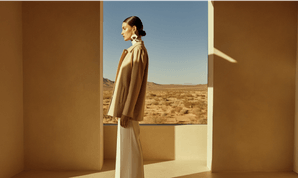
AI at Work
50+ AI Image Prompts That Actually Work for Marketing Campaigns

Akshita Sharma · Content Marketing Associate
November 29th, 2024 · 17 min read
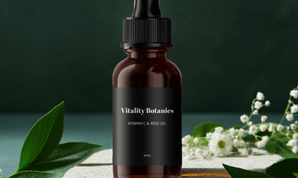
AI at Work
6 AI Product Photography Ideas for Captivating Ad Campaigns

Neelam Goswami · Content Marketing Associate
November 14th, 2024 · 12 min read

AI at Work
AI Brand Management: How to Maintain Brand Consistency With AI Image Generators

Neelam Goswami · Content Marketing Associate
April 2nd, 2025 · 12 min read